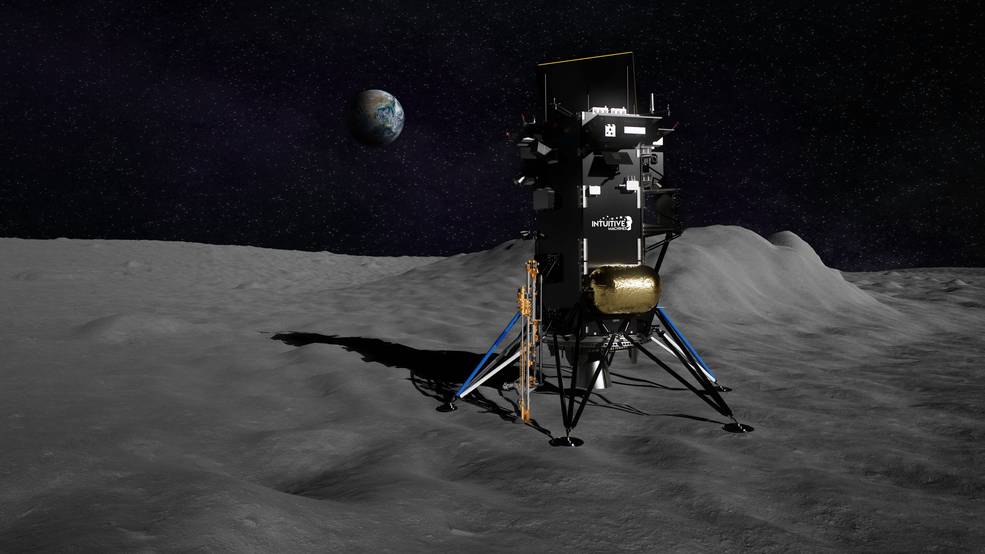
Several SpaceX launch delays have pushed a commercial moon lander's liftoff back by a month.
Intuitive Machines, which had hoped to launch its robotic IM-1 mission no earlier than Jan. 12, 2024, will now wait an extra month to launch with SpaceX. The new launch window begins no earlier than mid-February, Intuitive representatives said in a release on Tuesday (Dec. 19). Once the launch window opens, it will last several days.
"The updated window comes after unfavorable weather conditions resulted in shifts in the SpaceX launch manifest," Intuitive officials wrote. Poor weather in Florida caused SpaceX to recently delay the launch of both a Falcon 9 rocket laden with Starlink satellites and a Falcon Heavy tasked with lofting the U.S. Space Force's mysterious X-37B space plane, which can stay in orbit for a year or more at a time.
Related: Moon mining gains momentum as private companies plan for a lunar economy
IM-1 is poised to land at the south pole of the moon on what could be the first commercial mission to the surface, although that title depends on the launch timeline of the Peregrine lander built by Astrobotic Technology. Peregrine is now manifested to fly Jan. 8 on board United Launch Alliance's Vulcan Centaur rocket, the debut mission for that launcher.
Intuitive Machines emphasized that its spacecraft is ready for launch, and it is only waiting for its Falcon 9 rocket to be available and for the launch window to open. After the mission launches from Cape Canaveral Space Force Station on Florida's Space Coast, the Nova-C lander will aim to touch down at the rim of Malapert A, a crater near the lunar south pole, when "specific lighting conditions" are available.
Several international private ventures have attempted, but not succeeded, in landing on the moon in recent years. Tokyo-based company ispace's Hakuto-R lander had a go this past April, for example. But NASA hopes to make commercial landings a regular feature in the near future. Both IM-1 and the Peregrine mission are funded under the agency's Commercial Lunar Payload Services program, or CLPS. CLPS aims to support future crewed landings of NASA's Artemis program, which aims to establish a research base near the moon's south pole in the coming years.
NASA hopes to put the first human mission, Artemis 3, at the south pole in 2025 or 2026. Given delays with SpaceX's Starship lander and some private spacesuits, however, the Government Accountability Office suggested that 2027 is the more realistic target.
Four astronauts will circle the moon with Artemis 2 no earlier than late 2024, assuming that crew training and the development of key hardware — the Orion spacecraft and Space Launch System rocket — continue to progress on schedule.







